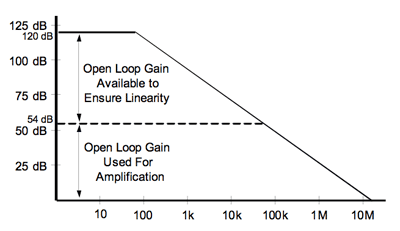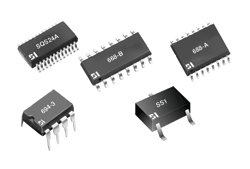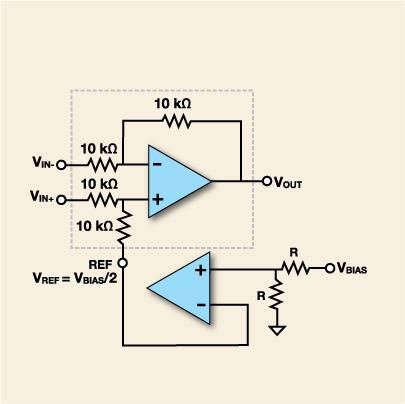Selecting the Proper Amplifier for Strain Gauge Applications
The world of data acquisition is extremely diverse, encompassing measurements of temperature, pressure, humidity, strain and a variety of other physical phenomenon . . .
http://www.nxtbook.com/nxtbooks/hearst/projectanalog_200810/index.php?startid=5

Fig. 1. Open Loop Gain vs. Frequency
An Overview of Analog Sensor Conditioning Circuits
Analog sensors produce a change in an electrical property to indicate a change in its environment…
http://www.nxtbook.com/nxtbooks/hearst/projectanalog_200810/index.php?startid=9

Fig. 2 shows an instrumentation amplifer circuit that conditions a remote voltage sensor.
Using a Digital Potentiometer to Optimize a Photo Detection Circuit
Photodiodes bridge the gap between light and electronics. Many times, precision applications (such as CT scanners, blood analyzers, smoke detectors, position sensors, IR pyrometers and chromatographs) utilize the basic transimpedance amplifier circuit that transforms light energy into a usable electrical voltage…
http://www.nxtbook.com/nxtbooks/hearst/projectanalog_200810/index.php?startid=11
Resistor Networks in Critical Applications
For stability in medical and aerospace electronics, thin-film is in…
http://www.nxtbook.com/nxtbooks/hearst/projectanalog_200810/index.php?startid=13

Selecting the Right Op Amp
Three of the most common design considerations prevent op-amp afterthought…
http://www.nxtbook.com/nxtbooks/hearst/projectanalog_200810/index.php?startid=15

Fig. 2. Basic difference amplifier with buffered REF pin.
Viewpoint
Signal-conditioning components are more sensitive than ever!
We expect a lot of ourselves when itcomes to taking in and processing information from our senses. They are the innate tools we use to make decisions, change direction, and react to the environment around us in a split second. We expect to hone in on things in seconds, regardless of any interference, and we expect nothing less from the components used in our electronic designs.
In this issue of Project Analog, Microchip Technology’s article “Selecting the ProperAmplifier for Strain Gauge Applications” explores the world of data acquisition and how designers must be diligent about selecting the correct sensor for their application and also in designing appropriate signal conditioning to deal with issue such as temperature, pressure, strain, and of other physical phenomena.
Microchip Technology also discusses how the adjustability of the digital potentiometer can be used as an advantage in photosensing circuits in the article “Using a Digital Potentiometer to Optimize a Photo Detection Circuit.” Gina Hann of Texas Instruments explores three basic rules of the most common design considerations to prevent op amp afterthought in the article “Selecting the right Op Amp.”
You’ll also find some great new features in this issue, including even more reference links at the end of each article to help in your quest for better designs. There’s also the first Project Analog video hosted by Microchip’s Kevin Tretter. He introduces us to two new families of auto-zeroed op amps, the MCP6V01/2/3 and MCP6V06/7/8, that offer self-correcting architecture, which enables ultra-low offset voltages, minimizes drift over time and temperature, and more.
Bryan DeLuca

For more on Project Analog visit www.projectanalog.com
Advertisement
Learn more about Electronic Products Magazine





